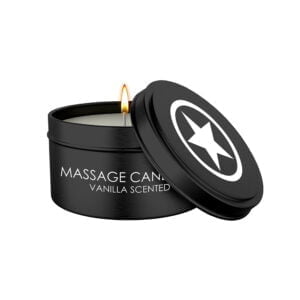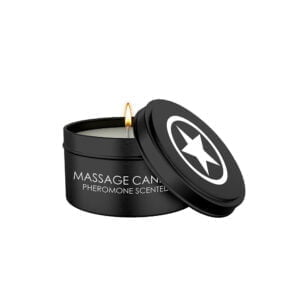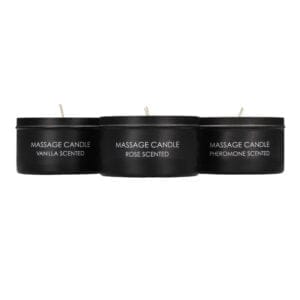0
£ 0.00
0
Shopping cart (0)
Subtotal: £ 0.00
Spend £ 149.00 to get free shipping!
Congratulations! You've got free shipping.
FREE worldwide shipping on orders £149+
FREE UK shipping on orders £49+ and FREE worldwide shipping on orders £149+
Go Shopping
FREE UK shipping on orders £49+ and FREE worldwide shipping on orders £149+
Go Shopping
There are several types to consider for personal use. Silicone-based lubricants are known for their long-lasting qualities, making them ideal for extended activities without frequent reapplication. On the other hand, water-based lubes are often favoured for being gentle and easy to clean.When considering alternatives for lubricant, it is important to use substances that are safe and non-irritating. According to the Cleveland Clinic, certain household products like lotions and oils can cause irritation or infections and are best avoided. Understanding the purpose and properties of each type can guide us in making informed choices for our needs.
Types of Lubricants
When considering lubricants, it's essential to understand the difference between water-based, silicone-based, and oil-based options. Each type has unique properties and uses that determine its best applications.Water-Based Lubricants
Water-based lubricants are famous for their versatility and ease of cleaning. These are ideal for personal use because they don't stain and are safe with latex products. They offer excellent lubrication but can dry out faster and may need reapplication during use.Some water-based lubricants include added ingredients like glycerin and parabens, which can affect individuals with sensitivities. Their main advantage is compatibility with a wide range of materials and ease of clean-up.Silicone-Based Lubricants
Silicone-based lubricants are known for their long-lasting properties and silky smooth texture. Unlike water-based lubes, they don't dry out quickly and require less frequent reapplication. This makes them ideal for water activities, as they resist being washed away.However, silicone-based lubes can degrade silicone toys, so their use with such items is not recommended. It is also more challenging to wash out fabrics and surfaces, so extra care is needed when cleaning.Oil-Based Lubricants
Oil-based lubricants are characterised by their thick consistency and prolonged lubrication. Due to their stability and resistance to water, they're suitable for massages and specific machinery. However, they are not recommended for latex products as they can cause degradation.These lubricants can be more challenging to wash off and might stain fabrics. They are excellent for scenarios where prolonged lubrication is necessary, like machine parts or long-lasting massages.Understanding each type's differences and ideal uses helps us make informed choices based on specific needs.Usage and Compatibility
Understanding how lubricants interact with various materials and specific types of sexual activities can enhance both safety and pleasure. We must consider the type of lubricant to use, as different kinds can affect condoms, sex toys, and various forms of intercourse differently.With Condoms and Sex Toys
When it comes to condoms, especially latex condoms, we must be cautious about the lubricant choice. Oil-based lubricants should be avoided with latex, which can weaken the material and lead to breakage. Water-based lubricants are a safe choice for use with both condoms and a variety of sex toys, including silicone toys.For silicone sex toys, using water-based lubricants is recommended. Silicone-based lubricants can degrade the material of silicone toys, resulting in damage or reduced lifespan. Always ensure any lubricant used with condoms or sex toys is marked as compatible, providing maximum pleasure and safety. Personal lubricants can significantly enhance the experience, but picking the right type is crucial.Lubrication for Different Types of Sex
Different sexual activities may require specific types of lubricants for optimal experience. For vaginal sex, many find water or silicone-based lubricants effective in minimising friction. During anal sex, thicker formulations are often preferred, offering longer-lasting lubrication and comfort.Oral sex is another consideration where flavoured lubricants might be preferred to enhance the experience. If we are using diaphragms for contraception, it's vital to avoid oil-based lubricants, as they can affect the material and functionality. The key is always to ensure compatibility with the specific activity or product in use, enhancing safety and pleasure.Health and Safety Considerations
When selecting a lubricant, we must consider various health and safety factors to ensure comfort and avoid adverse reactions. Understanding how ingredients can affect our bodies is crucial, especially for those with sensitive skin or specific health concerns.Irritation and Sensitive Skin
Choosing lubricants free from irritating ingredients is essential for those with sensitive skin. Common irritants include parabens, certain additives, and fragrances. Opting for fragrance-free and hypoallergenic products can minimise irritation. Ingredients like aloe vera and vitamin E are often gentler and can soothe the skin.Also, avoiding glycerin products may help reduce the risk of yeast infections. When trying a new product, conducting a patch test on a small area can help spot potential reactions before vaginal use.pH Balance and Vaginal Health
Maintaining the natural pH balance of our vaginal environment is essential for health. A lubricant should be pH-balanced to match the natural acidity of the vaginal area. Disrupting this balance can lead to vaginal dryness or infections.Products designed for vaginal use often indicate their pH level on the packaging. They aim to support both the vaginal tissue and the health of the vulva. Checking the osmolality of a lubricant, which refers to its concentration of ions, helps us choose products that won't disrupt our body's natural lubrication.Avoiding Infections and STIs
Using the right lubricant can reduce the risk of infections and STIs. It is crucial to select products with recognised safety standards. Avoiding lubricants with sugars or high osmolality levels can prevent conditions like yeast infections.When considering pregnancy or protecting against STIs, we should look for compatible lubricants with barrier methods, like condoms. It's also crucial to apply lubricants that are safe for the genital tissue and won't damage protective layers. Regular communication with healthcare professionals can aid in making informed choices for our health and safety.Selecting the Right Lubricant
Choosing the proper lubricant involves understanding various factors such as texture, ease of clean-up, and the presence of natural ingredients. Whether for sexual wellness or machinery maintenance, the lubricant's purpose guides our choice. Different options offer unique benefits suited for specific applications and preferences.Attributes of High-Quality Lubricants
When assessing a lubricant, we consider its texture and slipperiness. A smooth consistency helps with easy application and enhances comfort. For personal use, options like the best water-based lube are popular due to their easy clean-up and compatibility with condoms and toys. Water-based lubes like those from Good Clean Love are often flavourless and unscented, providing a natural feel.Some lubricants, like those containing aloe vera or jojoba, offer added benefits like soothing vaginal dryness or reducing pelvic pain. Choosing lubes without sugars or harsh numbing agents is crucial to avoid irritation. The best silicone-based lubes provide a long-lasting effect, ideal for sex in the shower, but they may not be suitable for use with some toys.Specialty and Hybrid Lubricants
In our exploration of speciality lubricants, we find options like natural oils. These, such as coconut oil or almond oil, provide moisturising benefits for massage or masturbation. They can enhance the experience but may not be compatible with latex products. Similarly, vegetable and baby oils offer unique qualities but have limitations in specific contexts.Hybrid lubes combine water and silicone and are known for their toy-friendly nature and long-lasting performance. Products like Replens Silky Smooth Personal Lubricant boast low osmolality, reducing irritation. The almost naked personal lubricant is 95% organic, making it a favourite for those seeking a natural option. When selecting, we balance each lubricant's features with our personal needs.Frequently Asked Questions
In this section, we address common inquiries about lubricating gels. We explore their primary function, benefits, and safety for sensitive areas. Additionally, we discuss potential allergic reactions and how they can improve comfort during sexual activity.What is the primary function of lubricating gels?
Lubricating gels are designed to reduce friction by creating a smooth layer between surfaces. This is particularly useful during sexual activity, where reducing friction can enhance comfort and prevent irritation. They help maintain moisture, ensuring more effortless movement and increasing user comfort.How can lubricants alleviate vaginal dryness?
Lubricants can effectively relieve vaginal dryness by providing additional moisture. They mimic the body's natural lubrication, making it easier to engage in sexual activity without discomfort. Gels designed for this purpose often contain ingredients that help retain moisture, offering long-lasting relief.Are water-based lubricants safe for sensitive areas?
Water-based lubricants are generally considered safe for sensitive areas. They are less likely to irritate because they are free from oils and silicones. Additionally, they are easy to clean and less likely to stain fabrics. Their compatibility with most condoms and toys makes them a popular choice.What are the uses of lubricant gel for women?
For women, lubricant gels can be used to ease pain during intercourse, counteract vaginal dryness, and enhance sensation. They can also be utilised for pelvic examinations or ultrasound procedures to reduce discomfort. Specific formulations may include soothing ingredients to improve their benefits further.How do lubricants enhance comfort during sexual activity?
Lubricants enhance comfort by reducing friction and irritation. This allows for smoother movements, preventing painful chafing or soreness. Maintaining adequate moisture contributes to a more enjoyable experience. Personal preference in texture and ingredients can also significantly affect comfort levels.Can personal lubricants cause allergic reactions?
While most personal lubricants are safe, some individuals may experience allergic reactions. This can be due to specific ingredients like fragrances, preservatives, or glycerin. It is essential to perform a patch test before broad use. Choosing hypoallergenic or fragrance-free options can minimise the risk of irritation.Delivery Policy
At the moment we deliver only to a few countries. Click on the icon above or check our FAQ section.
24/7 Support Center
You can contact our support team by sending us an email or by making a telephone call!
Categories
- Show All Categories
- Bondage (603)
- Condom (54)
- Hen And Stag Nights (10)
- Novelty (58)
- Sex Games (37)
- Sex Lubricant Product (176)
- Sex Toys (2274)
- Sexy Lingerie (552)
- Sweet Treats (9)
- Sex Lubricant Product (176)
- Anal Lubricant (10)
- Flavoured Lubricant Blowjob (25)
- Lubricant (72)
- Bath and Massage (19)
- Personal Hygiene (50)
Price Range
Brands
- California Exotic (11)
- Clean Stream (10)
- Doc Johnson (6)
- Dorcel (1)
- Empowered Products (2)
- Exs Condoms (5)
- Gun Oil (4)
- Herrco (1)
- ID Lube (55)
- Intimate Organics (4)
- Je Joue (2)
- Joy Division (1)
- Kheper Games (1)
- Lelo (4)
- Liquid Silk (3)
- Lubido (5)
- Mae B (2)
- Master Series (1)
- Me You Us (5)
- MyStim (1)
- Nexus (5)
- Perfect Fit (2)
- Pjur Lubricants (7)
- Pretty Love (1)
- Prowler (5)
- Rimba (2)
- Rocks Off Ltd (1)
- Seven Creations (1)
- Shots Toys (11)
- Skins Condoms (4)
- Taboom (1)
- Toy Joy Sex Toys (1)
- Various Toy Brands (3)
- Whipsmart (1)
- XR Brands (3)
- You2Toys (1)
Materials
- Jelly (1)
- Metal (1)
- Plastic (16)
- PVC (4)
- Realistic Feel (1)
- Rubber (1)
- Silicone (16)
- Skin Safe Rubber (2)
- Stainess Steel (1)
Size
- 10.2 Inches (1)
- 10.5 Inches (1)
- 120g/4oz (1)
- 125 Inches (1)
- 130ml (1)
- 16 oz (1)
- 165 CM (1)
- 17 oz (1)
- 17oz (1)
- 1floz/30mls (1)
- 1oz (1)
- 2.2 oz (1)
- 2.2floz/65mls (1)
- 2.5OZ (1)
- 2.75 Inches (1)
- 2.8 oz (1)
- 237ml (1)
- 240ml (1)
- 250ml (1)
- 250mls (2)
- 3 Inches (1)
- 30ml (4)
- 4.4 oz (1)
- 4.4oz (2)
- 4.9 oz (1)
- 5 Inches (1)
- 5.5 Inches (1)
- 50ml (1)
- 6 and 10 Inches (1)
- 6 ft of hose (1)
- 6 Inches (1)
- 6.5 Inches (1)
- 65ml (1)
- 7 Inches (1)
- 7.5 Inches (1)
- 7.75 Inches (1)
- 7.9 Inches (1)
- 8.5 oz (2)
- 8.5floz/250mls (1)
- 9 Inches (1)
- Assorted (1)
- See Description (1)
- 120ml (1)
















